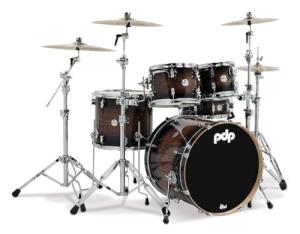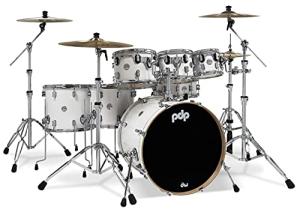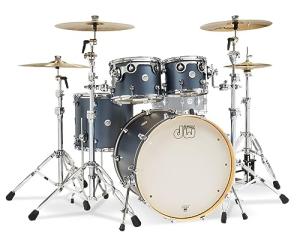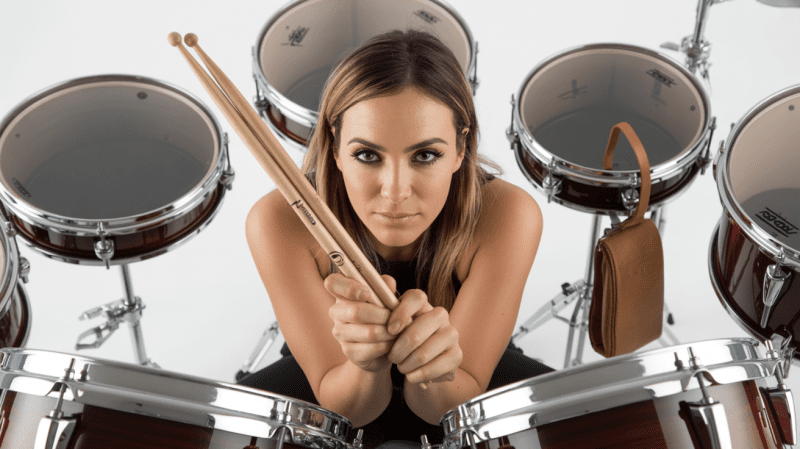If you're looking for a versatile music production tool, our experience with the MASCHINE+ from Native Instruments has shown it can really deliver. This standalone workstation allows for beat-making without being tethered to a laptop, which we found to be a refreshing change when creating music on the fly.
With a solid array of onboard sounds and effects, it feels like you're equipped with everything you need right at your fingertips.
The build quality definitely stands out, thanks to its robust, anodized aluminum design that promises durability. However, while the interface is user-friendly, there are still moments where a steeper learning curve can emerge, especially for those who might be new to standalone devices.
Overall, it strikes a good balance between performance and portability.
Bottom Line
For those in search of a powerful production workstation, the MASCHINE+ is a solid option. Its capability to operate independently while offering a rich suite of sounds makes it appealing for both studio use and live performances.
Don't hesitate to click here to purchase the MASCHINE+ and elevate your music creation process today!
Overview of the Native Instruments MASCHINE+ Production Workstation
This production workstation stands out with its ability to operate independently, eliminating the need for a computer in our creative process. We appreciate its robust build quality that suggests durability, making it suitable for both studio use and live performances.
With a quad-core CPU and ample memory, we found its performance generally smooth, though some users have reported occasional crashes.
The sound library is rich, featuring a variety of high-quality instruments and effects, enhancing our music production options significantly.
While the seamless integration with other gear is a highlight, we noticed that the interface can feel a bit overwhelming at first.
Overall, this device is a powerful tool for beat-making and live jamming, allowing us to capture ideas quickly and efficiently.
See Special Pricing
Key Features
Using this production workstation has truly enhanced our music-making experience, combining powerful tools with a user-friendly design. Here’s what stands out in terms of features:
Immersive Standalone Workflow
We appreciate the MASCHINE+ for its ability to operate entirely on its own. This feature allows us to create beats, melodies, and samples without needing to connect to a computer, making it ideal for both studio work and live performances.
It feels fluid and intuitive, allowing us to move seamlessly through different creative processes.
MASCHINE+ Selection
The included MASCHINE+ Selection gives us access to top-tier instruments, sounds, and effects.
It comes with a range of renowned drum and bass synth plugins that significantly expand our creative possibilities. The variety keeps our sessions fresh, enabling us to experiment with new styles and sounds.
High-Performance Hardware
Equipped with a quad-core CPU and 4 GB of RAM, the workstation handles projects with impressive speed.
We’ve found that it can manage multiple tasks without lag, which is crucial during our creative sessions.
While some users have reported occasional crashes, our experience has mostly been smooth and reliable, particularly when working within its capabilities.
Premium Audio Interface
The audio interface offers high-quality 24-bit sound at 44.1 kHz, which elevates our recordings. With multiple inputs and outputs, including options for dynamic microphones and MIDI connectivity, we can easily integrate it into our existing setups.
This versatility enhances our studio sessions, allowing us to record and connect various instruments effortlessly.
The combination of ease of use, powerful sounds, and high-performance hardware makes this workstation a notable choice for anyone looking to dive into music production.
Design and Build Quality
We appreciate the solid construction of this production workstation. Its robust, anodized aluminum body gives it a premium feel while ensuring durability for both studio use and gigs.
We found it to handle the rigors of transport well, showing minimal wear even after multiple outings.
The design is sleek and functional, with thoughtfully placed controls that enhance usability. The layout allows us to create and perform without fumbling around, making the workflow intuitive.
While some might wish for a more compact form factor, the spacious design feels purposeful and accommodating for various workflows.
The combination of build quality and user-friendly design makes it a reliable choice for both beginners and seasoned artists.
Special Features
When trying out this production workstation, we noted several strengths and a few weaknesses that potential buyers should consider.
- Standalone Flexibility: This device operates independently, making it great for both studio work and live performances. We appreciated not needing to rely on a computer.
- Robust Features: The included instruments and sounds are top-notch, allowing for a wide range of creative possibilities. It's a joy to sample and create beats seamlessly.
- Build Quality: The anodized aluminum design feels sturdy, which is important for those of us who travel or perform frequently. It gives a sense of reliability as well.
- User-Friendly Interface: While there is a learning curve, many tutorials are available to help us ramp up quickly. Once familiar, the workflow can be quite enjoyable.
Customer Reviews Analysis
Our exploration of user feedback on this production workstation reveals a mix of experiences.
Many users were thrilled with its potential, highlighting its ability to unleash creativity by easily sampling various sounds. The interface is generally praised for its accessibility, particularly for those familiar with tutorials.
However, we noted a significant number of complaints regarding stability issues.
Some users encountered frequent crashes, which can be a major setback, especially during live performances.
While some long-term users reported smooth operation, others suggested that limitations in CPU performance impacted functionality.
In summary, while this device offers valuable features for music production, potential buyers should be aware of the varying experiences related to its reliability and performance.
Conclusion
After spending some time with this standalone production workstation, we found it to have a mix of strengths and weaknesses.
The design and hands-on experience, especially with sampling capabilities, are appealing and can really spark creativity. Many users appreciate its potential for live performance and ease of use, supported by a variety of online tutorials.
That being said, we noted several concerns around stability and performance, particularly during live gigs.
Crashes and freezes were mentioned by some users after regular use, pointing towards potential issues with CPU efficiency.
While it has the tools to unleash creativity, we recommend considering these performance reports seriously, especially if planning to rely on it for critical live situations.
Frequently Asked Questions
When considering a powerful production workstation like this one, we often find ourselves looking for clarity on its capabilities and performance. Here are some common questions that may help you decide whether this gear is right for you.
How does the Maschine+ compare to the Akai MPC Live II in terms of performance and features?
In our experience, both devices offer robust performance, but they cater to slightly different workflows.
The Maschine+ shines with its deep integration into the Native Instruments ecosystem, making it a solid choice for users already familiar with their software.
Meanwhile, the MPC Live II offers unique features like built-in speakers and a different sampling approach, which might appeal to beatmakers who lean more towards hip-hop and urban genres.
What are the most significant improvements in the Maschine+ over the previous MK3 model?
The Maschine+ brings notable advancements with its standalone capabilities, enhancing our workflow significantly.
We appreciate the upgraded quad-core CPU and increased RAM, allowing for smoother operation, especially when using multiple plugins.
Additionally, the variety of included sounds and effects has expanded, giving us more creative options right out of the box.
In standalone mode, what are the capabilities and limitations of Maschine+?
Using Maschine+ in standalone mode allows for considerable flexibility; we can create beats, arrange songs, and perform live without needing a computer.
The limitations mainly arise from its CPU and RAM, which can become constraining during complex projects.
Some of us have experienced occasional crashes and freezes, especially when pushing the unit to its limits, so keeping our workload manageable is essential.
Are there any notable differences in workflow between using Maschine+ as a standalone unit versus with a computer?
While operating as a standalone, we enjoy a more tactile and immediate experience.
The pads and knobs feel responsive and intuitive, allowing us to dive right into production.
However, when connected to a computer, we gain the advantage of utilizing the full Native Instruments software suite, enabling deeper editing and more extensive sound design possibilities.
Some of us find it helpful to switch between setups based on the task at hand.
Which genres or types of music production is the Maschine+ best suited for?
Maschine+ is remarkably versatile and works well for various genres, including electronic, hip-hop, and pop.
Its rich library of sounds and samples makes it particularly advantageous for producers looking to create dynamic beats or lush soundscapes.
However, some users have reported that it excels more in electronic and rhythmic production, finding it less intuitive for genres requiring traditional instrumentation.
With the updates that came since 2020, how has the Maschine+ been enhanced or optimized?
Recent updates have significantly improved the stability and performance of Maschine+. We’ve noticed fixes that have addressed prior bugs and compatibility issues.
The developers have also added new features and sounds, enhancing our creative toolkit. These optimizations have made the standalone experience more enjoyable and reliable. This is a crucial aspect for those of us using it for live performances.





